This was our 1st stop in Thailand. We had read a lot about Phuket as the most popular tourist destination in Thailand – which is exactly why we did not intend to travel to Phuket! Our plan was to spend 10 days on Ko Lanta island, but a housesitting opportunity came up in Phuket so we decided to jump on it, and we are very glad that we did. Truly.
City Costs
To get a general idea for what things cost in Phuket I compared the cost of living to our previous hometown of Seattle, and of course Phuket is much more affordable than Seattle. Because Phuket is the most popular tourist destination in Thailand, I decided to compare the cost of living in Phuket to the other 2 destinations we were also planning to visit in Thailand. Those comparisons from numbeo.com are included below.
What we spent
At the end of our trip to Phuket Alison played her Money Crush game and found that we had stayed there for 11 nights for only $39.80 per person per day. In Phuket we spent $18.27 PPPD on food, which is more than average. And we spent less than average on housing at $7.54 PPPD since we only paid for 4 out of 11 nights. But we spent way more than average on in-city transportation at $12.70 PPPD since we had a rental car for 7 days plus 2 relatively expensive Grab car rides.
The graphic below shows what we spent in Phuket in US Dollars. This does not include costs for our fixed expenses, such as annual medical insurance. It also does not include regional travel costs. To reach Phuket we flew from Penang Island in Malaysia using AirAsia for $70 per person.
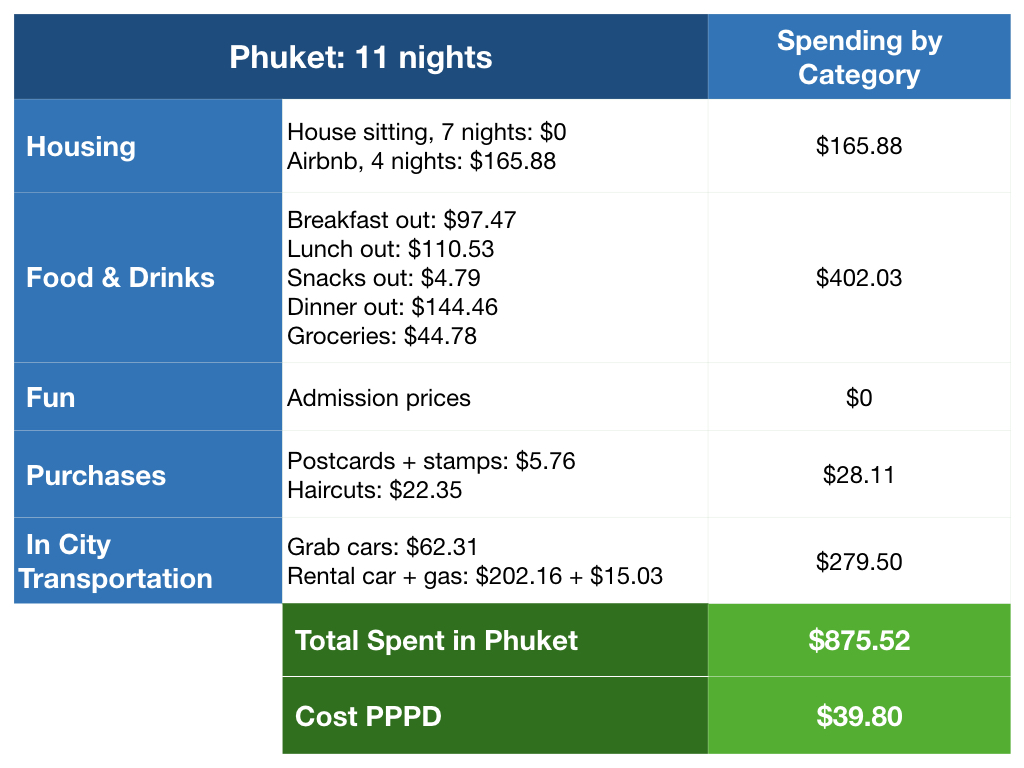
Housing
Our housing options as full-time travelers range from a hotel booked with points or dollars, an Airbnb, or a house sit.
House sitting is awesome
The only reason we visited Phuket is because we found a house sit that we wanted. The home/pet owner wanted to leave the end date flexible so we agreed to do that to make it work. In the end the house sit was shorter than we had hoped so we also needed an Airbnb home for the second half of our stay in Phuket, but having that house sit for 6 nights was an amazing experience. Instead of a hotel or sterile Airbnb, we stayed in an expat’s condo with neighbors. By adopting a bit of the routine from our housesit we were able to see a bit of the lifestyle and community there and that gave us a chance to experience a side of Phuket with locals and expats.
And we just loved taking care of the cats and hanging out with them. Every day we took walks around the condo complex with a few cats leading the way and a few more chasing behind us. They were a super entertaining bunch.
We loved the condo, it totally felt like home. Morning coffee in the backyard garden was a fabulous way to start the day. And we had as many fresh mangoes as we could eat from the trees in the yard. A late night dip in the pool with a view of the stars was a fantastic way to end the day.
Round 2 – Apartment on our own
After we left our house sit we moved on to our own Airbnb. That gave us a chance to get a sense for staying in Phuket without the expat condo community we were in previously. Our new Airbnb was run by a couple that was an expat guy and a local Thai lady. I specifically picked a place that included free parking, but when we arrived we found that there was no place to park a car within a six block radius. So we had to give up our rental car. The worst part about that was having to drive all the way back up to the northern tip of the island to take the car back to the airport. The traffic along that drive is horrific! Once we got back to Rawai we just needed to shrink our experience radius to walking distance. And since we were staying very close to all of our favorite restaurants and Rawai Beach, that was no problem.
We probably should have tried to use the bus system, but we didn’t. We thought about getting a scooter, but we decided it wasn’t the right time to join the scooter masses since we have never been on a scooter before. Leaving our house sit also meant we didn’t have our fun neighbors and the little the community and pets. We had already visited the tourist sites we were most interested in, so we ended up using our time to work on our new website. We had fun and we really enjoyed being more productive. Our Airbnb was in a small complex of cottages, so we were spending more time with tourists. And walking around Rawai was definitely putting us in more contact with tourists. By the end of our stay we decided that Phuket just wasn’t ticking all our boxes. It definitely didn’t feel like “we were at home” while we were there. We were getting a great sense of accomplishment working on our website, but honestly we could have been doing that anywhere.
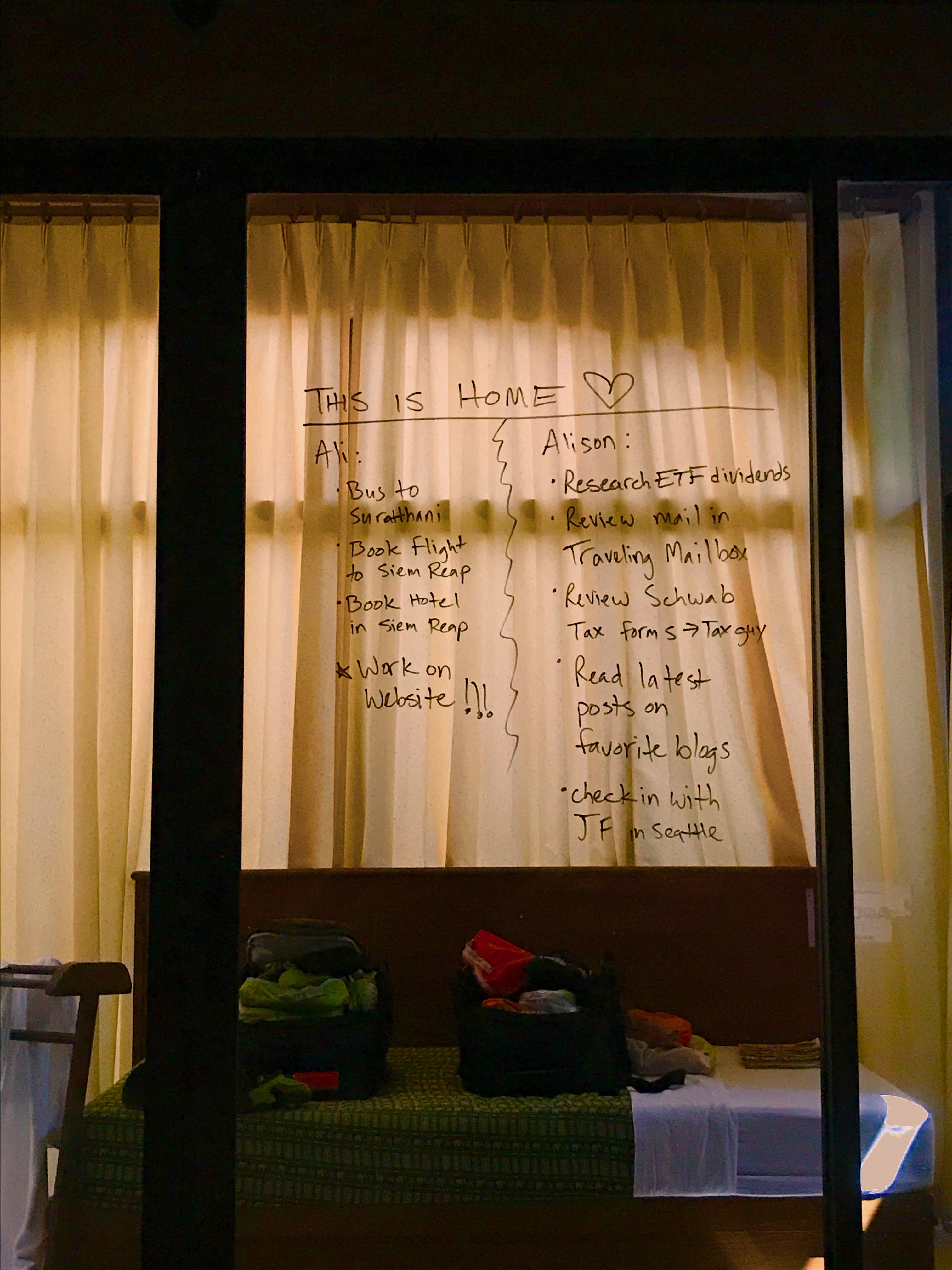
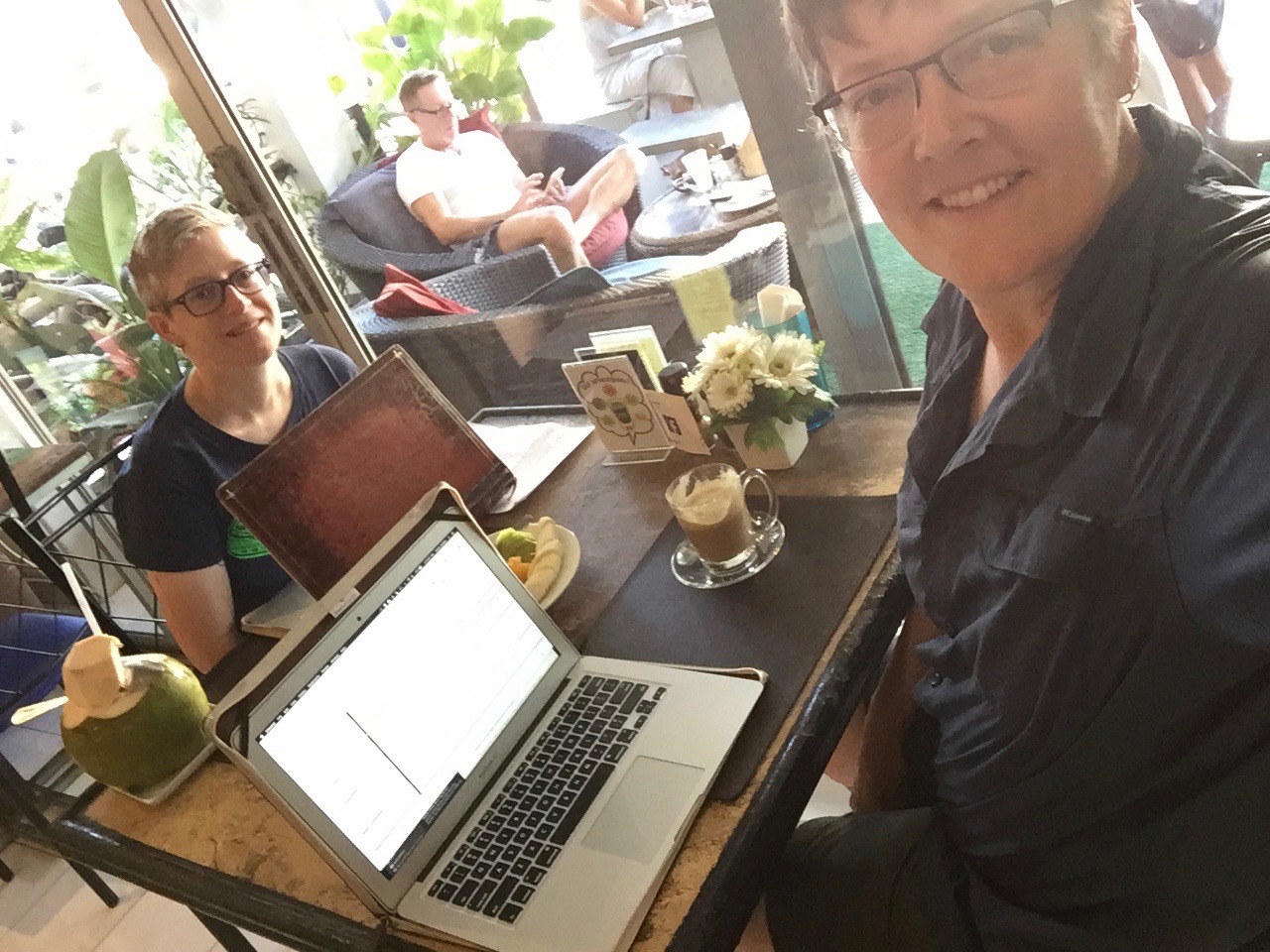
Rawai neighborhood
Phuket is a good destination for people who love a to hang out at the beach. There are definitely a few parts of Phuket that are more touristy and focused on a creating a really fabulous beach experience, like Patong, Karon and Kata, compared to Rawai where we stayed. We aren’t proper beach bums who want to spend a day on a sunny beach, but we will sit on the beach under a tree in the same way we would sit in a garden. And we do love to walk along the beach. Rawai might not be the ideal beach for proper beach bums, but we were very happy there since it has lots of shady trees.
We try to find neighborhoods to stay in that are less touristy and more blended with locals. We were in the Rawai neighborhood because that’s where our house sit was located. It is a neighborhood with a good blend of locals and expats, and it also has good markets and really great restaurants. We were told that Phuket really isn’t a place where you can avoid tourists completely. And that certainly jives with what we saw. According to the friends we made, it’s pretty hard to find an area in Phuket that you would call a typical Thai neighborhood without any tourism awkwardness. When we left our house sit we wanted to stay in Rawai since we had gotten so comfortable there.
Food
We shopped and ate at home some, but not as much as we expected. We picked up some of the favorite local restaurants from our new buddy and returned to her local haunts for meals on a very regular basis. Restaurant prices were low enough that there was no reason to resist eating out. Our favorite restaurants were Wilson’s Cafe for brunch and Street Hut for Thai dinners.
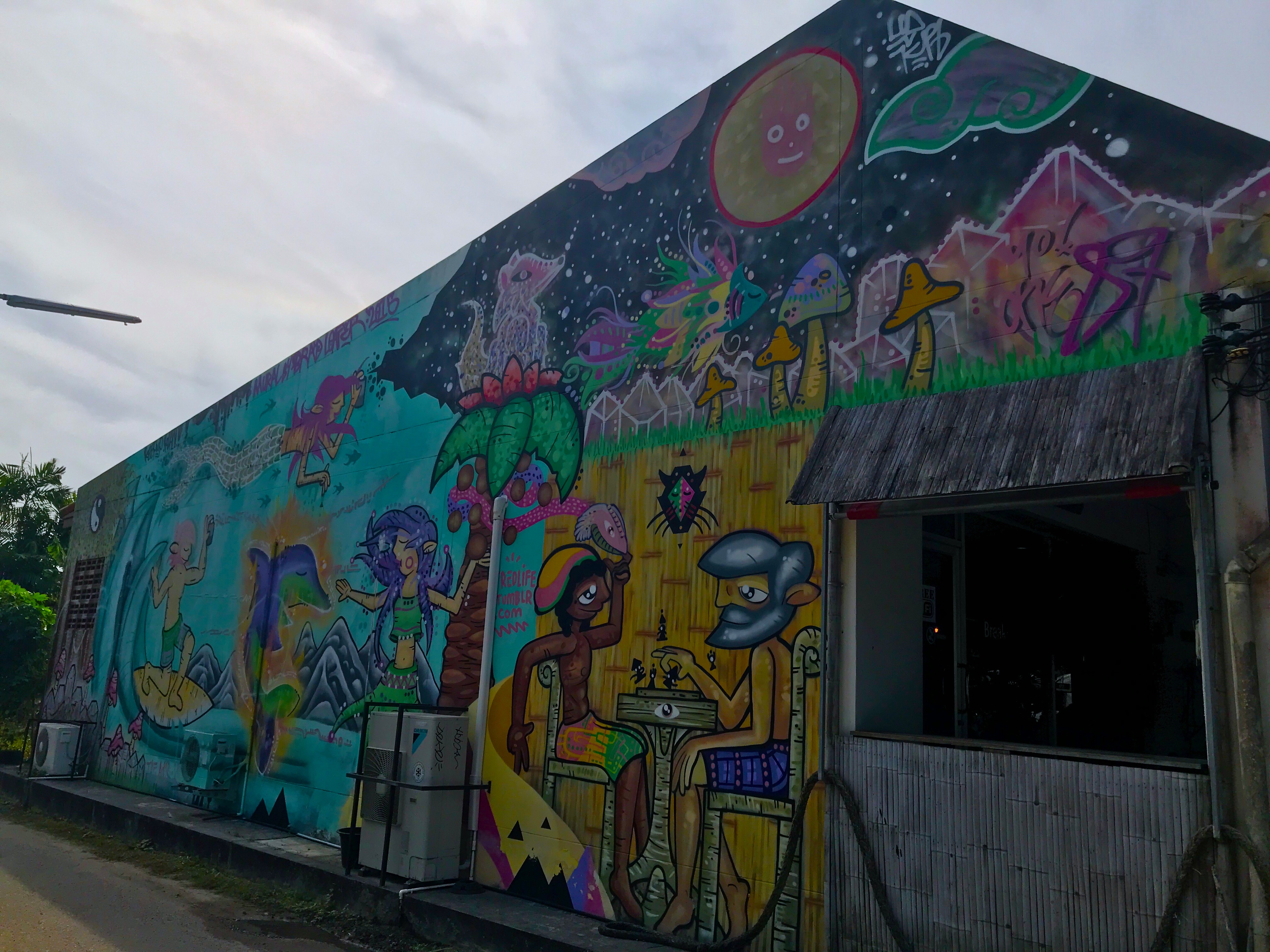

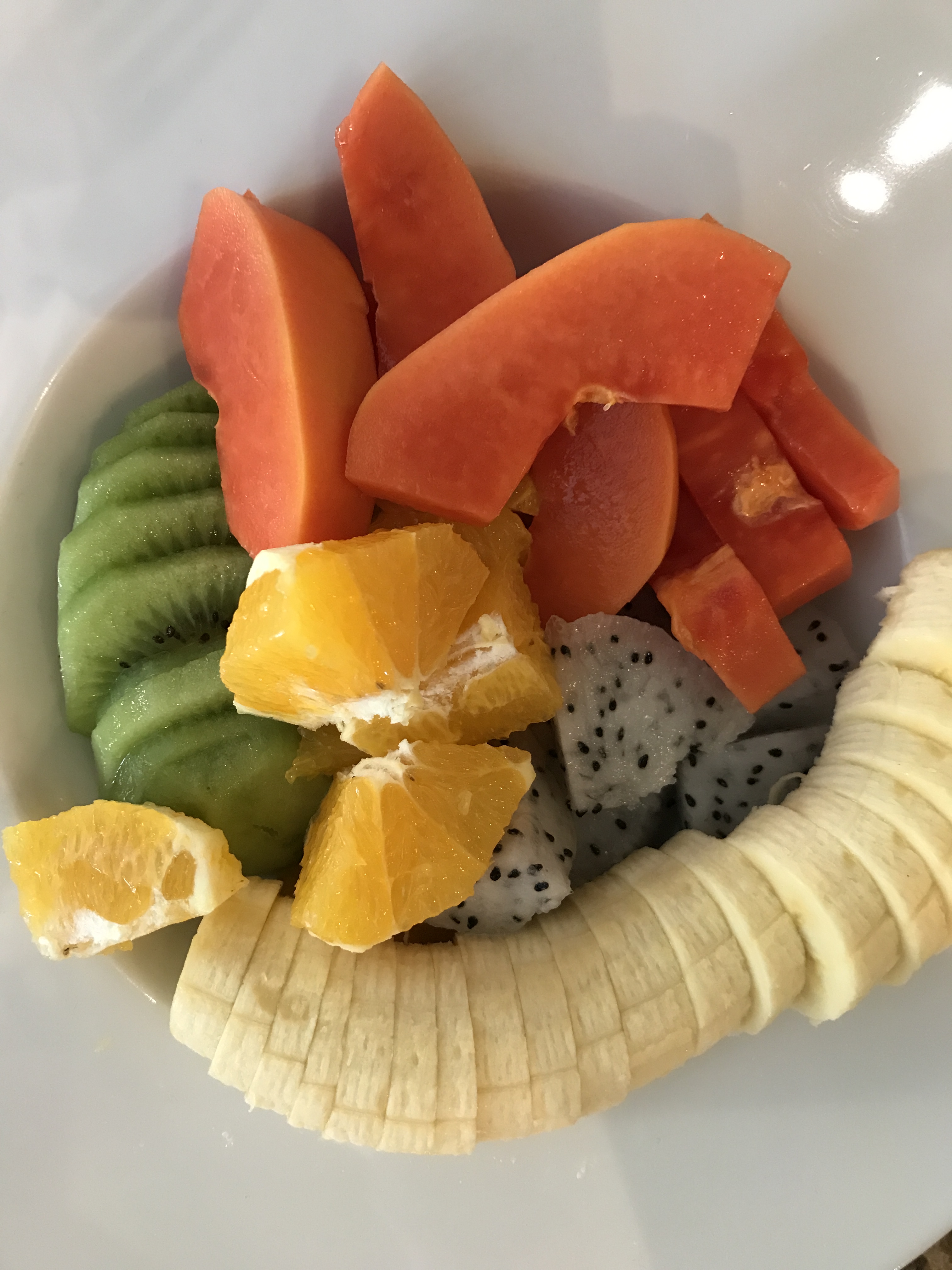
Fun
We aren’t always good at being tourists. In fact we are often really bad at being tourists. And during our stay in Phuket we were not trying to hit the popular tourist spots, we actually were avoiding them. What we were most interested in was seeing a couple of Buddhist temple sites and hanging out with the locals. If you are looking for a good list of tourist activities in Phuket you will probably think our list is boring. We didn’t go out to see elephants or monkeys, we didn’t go to the world famous Patong beach, we and we didn’t see any of the island nightlife. Sorry (not sorry)!
1. Big Buddha
When we drove around Phuket we could sometimes see a hint of the white marble covering the Big Buddha. This was the one thing we wanted to see most during our visit. Phuket’s Big Buddha’s name is Phra Phutta Ming Mongkol Akenakiri. It’s the 4th largest Buddha in Thailand, and arguably the most beautiful. Most of Thailands big Buddhas are golden. This one is covered with beautiful white jade marble from Burma and it’s quite stunning. The main statue is 45 meters tall and 25 meters wide at the base. The other thing it’s famous for is the duration of its construction process. Construction of the main statue started in 2004. In 2017, the project was declared to be 80% complete. When we visited in February 2019 the construction of the stairs appeared to be nearing completion but there was still a large crane on site and the temple is still under construction. Impressively, construction funding is said to have come mostly from donations. The smaller Buddha statue that is gold in color is actually a brass statue and that piece cost 8 million baht. The very large main Big Buddha cost 30 million baht on it’s own (that’s $945,700 USD). Donations have come from visiting tourists and also from devout Buddhists all over the world. We LOVED seeing the Big Buddha. It is awesome! This is also the temple where I got the Sai Sin bracelet I am still wearing today, along with blessings from the monk who tied it on my wrist. I love this bracelet!
2. Walking Rawai Beach
It actually is ironic that Rawai was the first real tourist beach on Phuket. That’s mostly because Rawai was easy to reach from Phuket Town while the drive to the west coast was still too dangerous to make it worthwhile for most people. Rawai was a working beach and well-used mooring point for fishermen so the roads to that area were relatively well-maintained for many years before the west coast beaches were popular. Rawai Beach still feels more like a working beach for fishermen rather than a sunbathing beach, which is exactly what we liked about it. We’d rather snooze or read under the trees than work on our sunburns.
3. Visiting Wat Chalong
We were telling the local friends we made in Phuket that we were really excited to see the Big Buddha, and the response was that it’s more important for us to go visit Chalong Temple. Apparently that’s where miracles happen! So we did a quick google search and then hopped in the car and drove to Wat Chalong, otherwise known as Wat Chaitararam in the Chalong district. Wat Chalong is by far the largest and most revered temple in Phuket. It was built around 1837 and has sprawling temple grounds. It also has busloads of tourists but the grounds are so large that it’s still easy to find a few quiet spots to sit and admire the different structures around the temple grounds. As you would expect, the Grand Pagoda, is where the crowds really come together to see the beautiful golden statues. And for Buddhists this is an important pilgrimage site because of it’s relic — a splinter of bone from the Buddha. There’s an area with lots of firecrackers going off to make wishes come true, and a huge market area full of food, fresh coconuts, and souvenirs.
4. Volunteering with Soi Dog Foundation
Because we were in Phuket as cat sitters, and had made friends with this amazing expat in Phuket who is a big-time cat lover we also spent some of our time volunteering for Soi Dog Foundation, which is the charity of choice for our new buddy. Soi Dog takes care of cats and dogs both, and if they take care of more dogs than cats we wouldn’t have noticed since our house sit was with a cat lover who spends a lot of her spare time rescuing cats. When we arrived at the condo there was an extra cat in the bathroom recovering from her sterilization surgery. The routine for our new pal is to collect kittens and adult cats around the island and take them to Soi Dog for whatever medical treatment and sterilization they need. Then she keeps them at home and feeds them until they are well enough to find new foster parents or to be returned to where they were living. So we spent our first full day in Phuket running around collecting kittens, feeding them, getting them their vaccinations, and then returning them. We also picked up an adult male with some health issues who needed treatment and sterilization. Then we drove around the island to see some sites and all of a sudden we started to see cats everywhere we went. Phuket really does have a very large cat population. So we gave the island a nickname, PhuCat!
Walkability
I wouldn’t call Rawai a pedestrian friendly area. The streets were narrow and crowded with scooters. We didn’t see many sidewalks and as pedestrians we had to be careful crossing streets or just walking along the street since we were sharing space with fast moving scooters.
Transportation
Most people travel around the island by scooter, and scooters go everywhere in every direction very quickly. A lot of the streets in Rawai are simple dirt roads. We had a rental car for our first week so it was easy to visit different areas and play tourists. Once we left our house sit we had no place to park the car so we had to turn it in. Grab cars were not as plentiful in Rawai and when we did take one we had to wait about 45 minutes for it to arrive and then we had to go find it when the driver stopped a few blocks away from us.
It was clear that the easiest solution would have been to get a scooter, but we were not interested in joining the masses on scooters. We have no experience or comfort level with scooters and we saw too many tourists with road rash and injuries from scooter accidents to think it was the right time to take our first spin on a scooter.
Where We Spent Our Time
Something we really appreciated
After we were settled in at our Airbnb we met our Phuket buddies for dinner at one of their favorite places. They were telling us that the Green Tamarind Kitchen has the best hamburgers in Phuket, so we had to put that rumor to the test. Yep those were awesome burgers! We watched those two ride up on their scooters and though, maybe we should give scooters a try next time? It was such a treat to just hangout with friends as if we were living there! That’s exactly the kind of experience we really enjoy as nomads. It is so important to us to try to make new friends on the road.
One of them is a Thai lady who we got to enjoy as a next door neighbor while we were housesitting. She used to bring us Thai breakfast treats in the morning after she dropped off her daughter at school. She really made us feel like part of the community while we were there. She gave us a better perspective of Thai culture and the unique situation in Phuket between locals, tourists, and expats. And then there’s our housesitting host, who basically talked us into changing our travel plans and visiting Phuket. Meeting this woman who travels for much of the year, has a home base in Phuket, and is living a financial independence lifestyle was amazing. We are so glad we met her. That night of burgers and beers at Green Tamarind Kitchen was definitely one of our favorite Phuket experiences.
The Bottom Line
Money Crush Score: Excellent, way under budget
Our Money Crush score does not factor in how much we liked the city, it’s focused on whether we made good financial choices and stuck to our budget. Our average daily spending goal for 2019 is $115 per day. That’s total dollars spent for the two of us. Our actual daily spending in Phuket averaged out to $39.80 per person per day, or $79.60 per day for the two of us. That’s only 69% of our average daily budget. That is a really good Money Crush score, largely because we had no housing costs for half of our stay because we were housesitting. Though Phuket is a destination where you really do need to have your own transportation, so we had a rental car for the first half of our stay and that did inflate our spending.
Travel Score: We loved our house sit, but we don’t plan to return
Our overall travel score is essentially a rating for how happy we were in this destination, which is 100% variable based on tons of factors. This does not include what we spent. It’s based mostly on whether we want to return for a longer stay in the future. The bottom line is that we only went to Phuket because we were excited about a specific house sit. Our experience related to that house sit was superb, in no small part because we made a new friend that we are really grateful for. This was our first international house sit. And we made a really important new connection with a financially independent, world traveler who we really like and respect. She taught us a lot about SE Asia, and we would gladly return to Phuket to house sit for her. Though we would also be happy to hang out with her somewhere else. But separate from that house sit experience, Phuket didn’t feel like a good fit for us.
LGBT+ Score: We appreciate the welcoming attitude and focus on Queer tourism, but…
We aren’t beach bums and we aren’t interested in a fabulous night life. It was nice to be in a place where public displays of affection are accepted. But honestly Phuket is a little too relaxed and wild for us. So we absolutely appreciated being in a place with a queer friendly vibe. But Phuket’s relaxed attitude also allows for massive amounts of prostitution and a frightening growth in HIV/AIDS infection rates over recent years. So overall the vibe we got from being in Phuket was that this place seems to really thrive on a lot of underlying seediness, as well as blatant marketing of seediness, and that’s just not our jam!

Book Recommendations
Our trip to SE Asia has added a ton of books to my reading list since I’m looking for fiction and non-fiction books set in each location we visit. I have not found any fiction based in Thailand that was appealing to me, but I’m still looking. If I do come across a good novel based in Thailand that isn’t based on the sex trade and a disappearance/murder coverup by the government I’ll be sure to pick that up. I love recommendations from others by the way, so feel free to let me know if you have a favorite book I need to add to my list.
Thailand has a variety of laws criminalizing free speech against the government and the monarchy, so it’s no surprise that there are plenty of banned books in Thailand. When researching Thailand I decided that learning about the government and monarchy would be thrilling enough. I mean who needs a made-up drama when the truth is as corrupt and intense as Thailand’s?!?! There are some really good reads out there on Thailand’s banned book lists. Here are the two that I was most interested in:
The King Never Smiles, by Paul Handley
This book was banned in Thailand as soon as it was released. It’s a biographical story of the beloved King Bhumibol Adulyadej, and includes some amazing detail about the of Thailand’s monarchy and government. During our stay in Thailand we saw his portrait everywhere. He was beloved by the people, as a deeply religious embodiment of the Buddha. King Bhumibol Adulyadej was born in the US and at the time of his death in October 2016 he was the world’s longest serving monarch. This book is considered illegal defamation in Thailand. He went from being an apolitical egalitarian king to being an autocrat who. Handed the full authority of a military dictatorship to the current military junta.
A Kingdom in Crisis: Thailand’s Struggle for Democracy in the Twenty-First Century, by Andrew MacGregor Marshall
This book dives deep into Thailand’s political issues and the complex role the monarchy has in politics and government related drama. Since there is no freedom of speech in Thailand, this author has been banned from Thailand because this book exposes the country’s corruption, human rights violations, and other issues.
Other stuff we learned
How big is this island?
Phuket is a pretty big Island, at 210 sq mi (543 sq km). The central part of the island has a lot of low mountains with forests and plantations, which means the different areas can feel fairly isolated from each other. Travel times between areas can take much longer than you might expect because of some pretty crazy traffic.
Population
At the time of the official census in 2015, the population was recorded as 386,605. But the real population numbers include large numbers of Thai people who officially reside elsewhere, as well as other migrants who are living there under the radar. Estimates put the number of Thai people living in Phuket at about double the census amount. Then there are also large numbers of undocumented migrant workers who are there to support the massive amount of development going on, or working in other tourism and non-tourism related industries. And there are also expats and tourists who are also living there for the majority of the year and juggling various Visa options to make that work. And then there are all of the tourists who are there in resorts and hotels as temporary guests. There are likely close to a million people on the island of Phuket at any given time.
Phuket’s economy
The local economy was based largely on tin mining from the 1600s into the early 1900s, until rubber production became the top economic driver. As rubber production boomed Phuket replaced more and more of the native forest land with rubber plantations throughout the 1900s. Large numbers of acres of native forest lands were cleared for rubber plantations in the 1900s. Thailand is still one of the world’s top rubber producing countries and Phuket still has a big role in Thailand’s rubber industry. Phuket’s rubber trade produces things like tires, medical gloves, and condoms. Interesting and maybe a little ironic.
The west coast of Phuket has a series of white-sand beaches, which is the draw that turned Phuket into Thailand’s number one tourist destination. Since the 1980s the pace of development has increased every year and Phuket has seen massive development with construction of resorts, hotels, apartment buildings, and houses along the west coast of Phuket. Large sections of undeveloped land was cleared for tourism development not just along the west coast as Phuket has also grown a large expat community of part-time residents. Today there is only one remaining significant stand of virgin rainforest in Phuket, and that’s Khao Phra Thaeo Park.
Within the tourism industry one of the biggest niches for Phuket is scuba diving. Phuket is said to be one of the top 10 diving destinations in the world. We heard a lot about scuba diving while we were there since we were housesitting for a scuba diver. Phuket has around 10 million tourists per year now, and the goal is to continue to increase those numbers.
LGBT+ friendly
The Thai Tourism Board has been focused on making Thailand the #1 queer travel destination in SE Asia. Thailand is a queer friendly destination with a relaxed attitude towards same-sex couples. Thailand has a very relaxed attitude towards sex and even prostitution, as long as it doesn’t involve public nudity.
Phuket is the most popular gay destination in Thailand, and there’s a large gay scene in Patong with a number of hotels and bars catering to LGBT+ tourists, including the area known as the Paradise Complex. Patong beach has a large gay section with rainbow flags flying at beachside resorts, and Karon beach is also very popular for LGBT+ travelers.
Phuket has 2 major LGBT+ events in April. First there’s the beach festival called Tropout in mid-April, at the same time as the Songkran Buddhist New Year holiday. And then there’s the Phuket Pride festival at the end of April with tons of parties and parades. These events bring in huge numbers of LGBT+ travelers from around the world.
There are lots of cabarets in Phuket and across Thailand with LGBT+ performers. Transgender people are often referred to as “Lady Boys.” Sex reassignment operations have been performed in Thailand since 1975, and Thailand is a major medical tourism destination for transgender people seeking sex reassignment surgeries. But Thai people are still not allowed to change their names or their gender on their IDs, even after surgery. LGBT+ people in Thailand are often held to entertainment industries for their careers and blocked from other professions.
Phuket also caters to LGBT+ travelers who want to plan weddings on their beautiful tropical island. Even though gay marriage is not legal in Thailand. Right now there’s a civil partnership bill which, if passed, would grant same-sex couples some property and inheritance rights, but would not grant any rights to public welfare, tax benefits, or adoption. Current reports say that the bill should be introduced in the parliament very soon and has a strong chance of passing. The highest-level source of support is apparently the Thai Tourism Board. According to the Bangkok Post, Thailand’s tourism industry represents about 20% of the economy and is still growing. The Thai Tourism Board sees the LGBT+ market as the key to the tourism industry today. According to the firm LGBT Capital, revenue from LGBT+ tourists is now 1.15% of Thailand’s total economy.
Sex tourism
Thailand has one of the highest HIV/AIDS infection rates in the world, and one of the largest sex tourism industries in the world. Phuket is key in both of those categories. Phuket has the highest incidence of HIV/Aids infection in Thailand. Phuket has more than 7,000 documented sex workers.
Prostitution was made illegal in Thailand in 1960, because of political pressure from the UN and US. But the Thai government replaced that original legislation with a new version in 1996 that was designed to allow sex tourism to continue and flourish in Thailand. The current legislation allows authorities to decide whether sex work is or isn’t “prostitution” on a case by case basis, while making sure sex tourism businesses are able to continue operating.
Sex tourism is a big part of the economy for Phuket, and attracts a large number of visitors from all over the world. Unlike many other sex tourism locations in Thailand where human trafficking is a bigger issue, prostitutes in Phuket are typically Thai girls and boys from more rural parts of Thailand. Phuket’s sex tourism customers are mostly foreigners from America, Australia, and Europe.
There are a number of different zones in Phuket focused on sex tourism. The biggest is Bangla Road in Patong, which is known as the heart of the tourist sex industry in Phuket. Bangla Road has around 2 dozen beer bars and go-gos, and hundreds of sex workers ready to entertain customers for the night. There are also lots of hotels and massage parlors focused on sex tourism.
Weather
Phuket has a tropical monsoon climate with little variation in temperatures. The average annual high is 90°F (of 32°C) and the average annual low is 77°F (25°C). We were there during the dry season that runs from December to March. The wet season covers the other eight months of the year. I don’t know about anyone else, but for me/us, that is really fraking hot. And for the record, Phuket averages around 87 inches of rain a year. Seattle averages only 37.49 inches of rain per year. So all you Seattle naysayers can shut it!


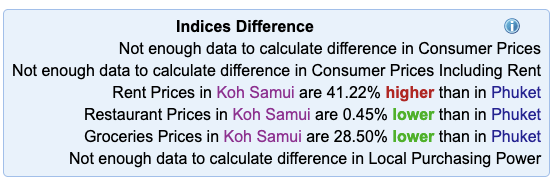


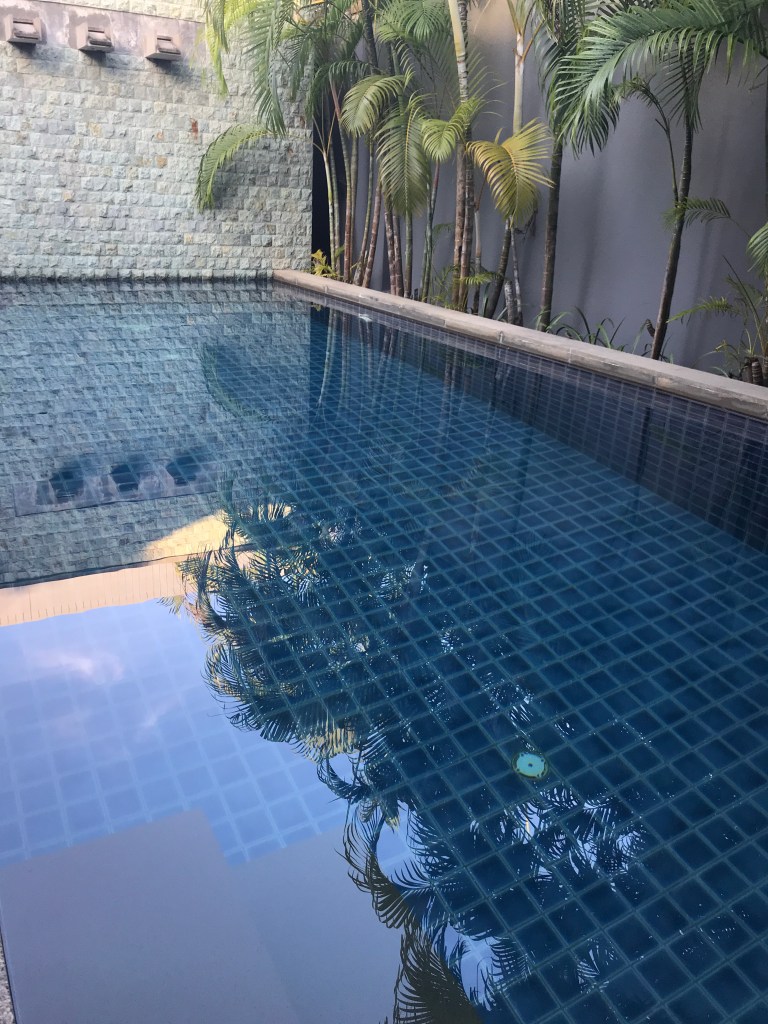
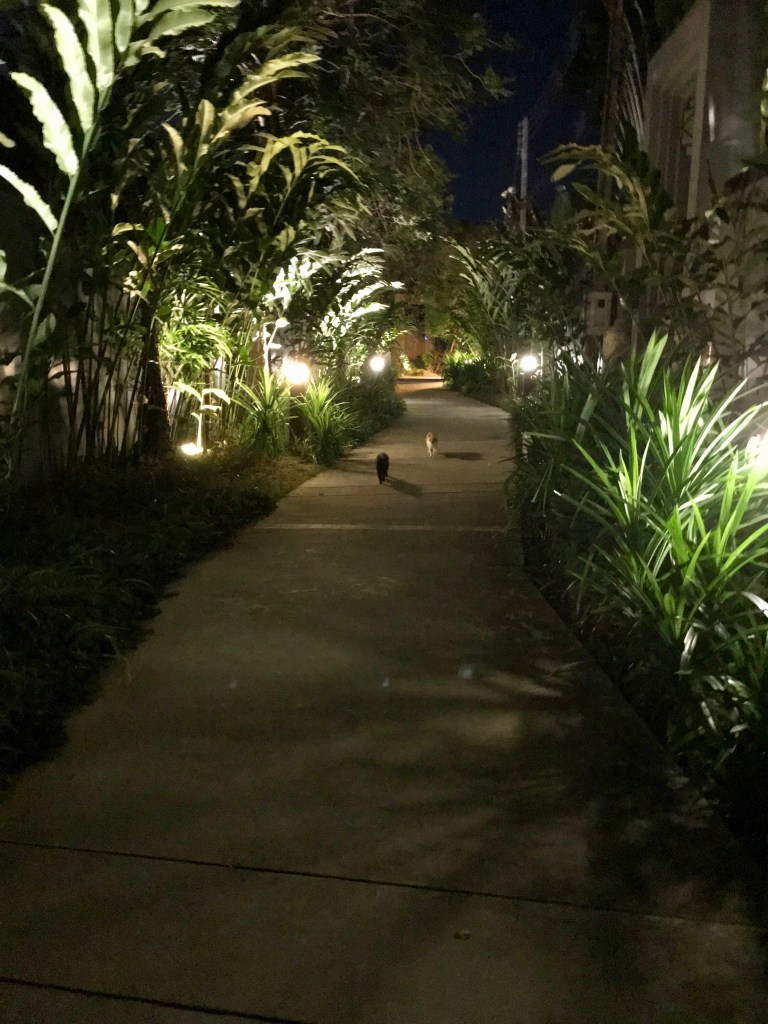





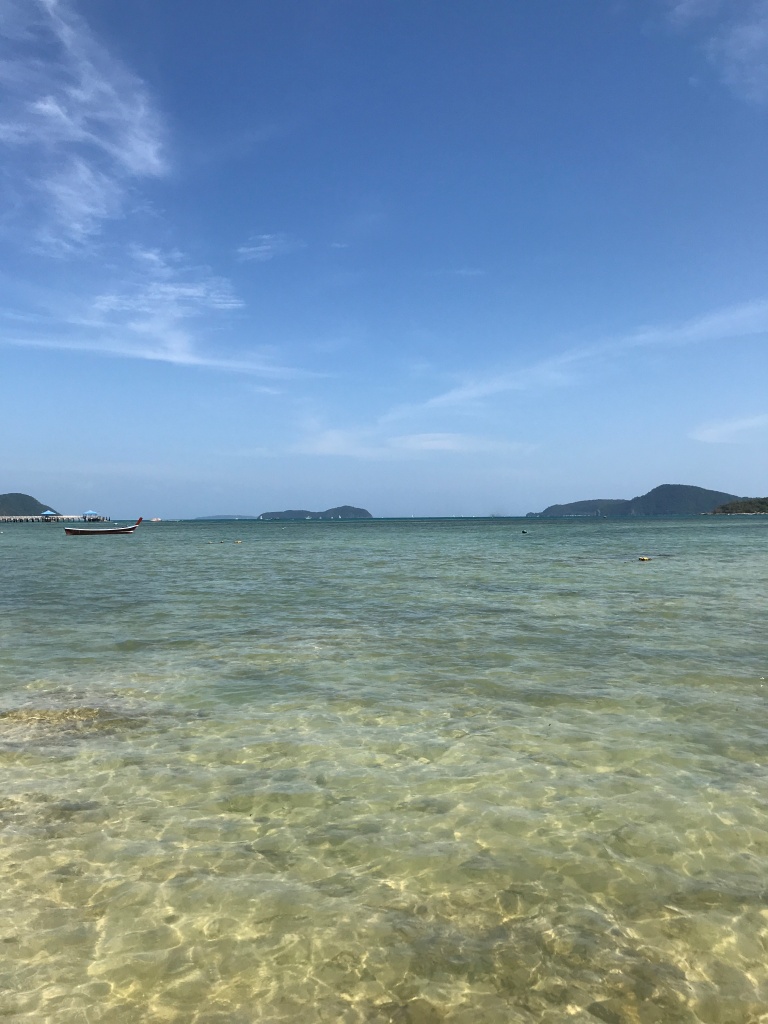
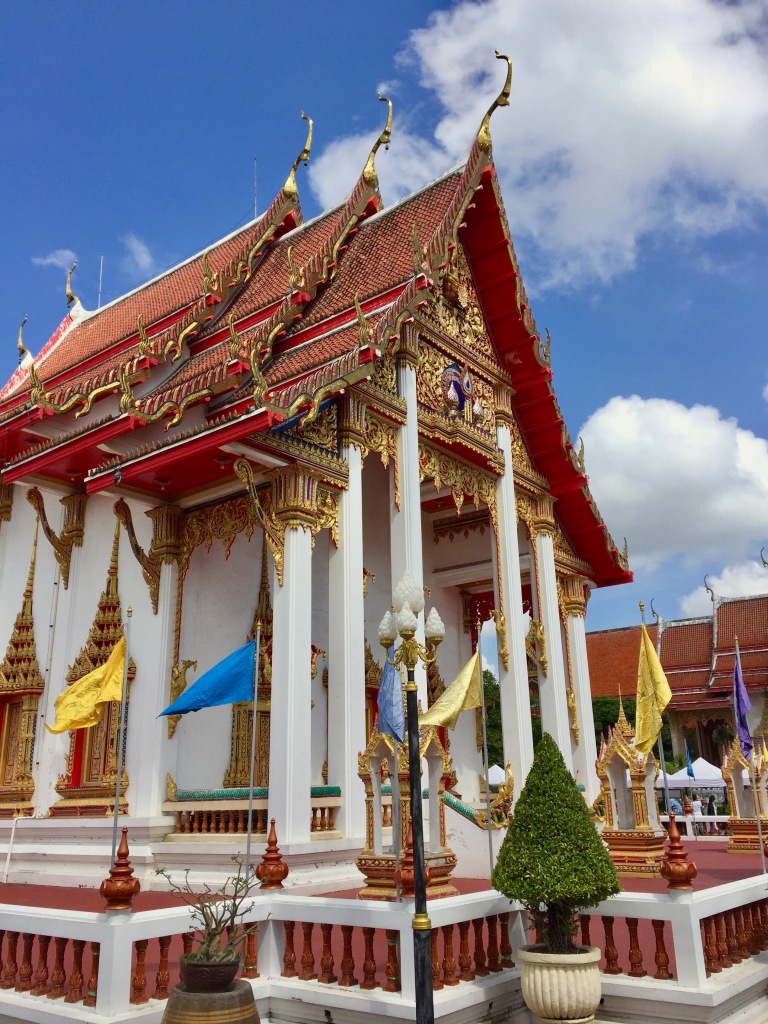





The temple and Big Buddha look amazing
LikeLiked by 1 person
Yes! Both of those sites really are wonderful to visit. And it would be fun to see the Big Buddha again after construction is complete so we can see the finished temple rooms and marble covered stairs. Beautiful!!
LikeLike
Hi Ali,
Very interesting to read your take on the same experience as ours in the same time frame.
For what it’s worth I think the scooter is a mandatory if extremely dangerous way to see the island, I have
years of defensive big bike experience but I still think it’s a risk there even if it is the better alternative to getting ripped off by the Grab Taxi Mafia. The scooter experience most of the time was pretty awesome though especially up near Big Buddha, on the hillside twisty roads and avoiding sitting in hours of bad traffic.
Of note the worst riders I found were not actually Thai’s either, embarrassed to say it was actually my fellow Americans/Europeans who would weave in and out of traffic shirtless at crazy high speeds with baseball hat on backwards in lieu of a helmet.
Like I say, all in all Phuket was not a terrible experience but one we’ll likely never repeat. Ever. Been there done that.
Take Care and see you in Edinburgh!!
DN
LikeLiked by 1 person
Dear Brother FIRE Nomad – you nailed it! I saw lots of little old local ladies pass us by on their scooters, and they always gave me a feeling of how normal scooters are in Phuket. But I also saw lots of pink guys with road rash on their sunburned arms and legs, and since I’m awkward enough walking or on a bicycle it’s just not a good idea to put me on a scooter! ;^)
LikeLike
[…] Read our Phuket City Report. […]
LikeLike
[…] We didn’t initially plan to be in Phuket but we found a housesit there that worked in our schedule so we rerouted ourselves for that. We met some wonderful people, including travelers and Thai people, and they were the best part of our experience. While we were housesitting we really liked the community we were in, and we loved our housesitting experience. But the general “party at the beach for cheap” vibe on Phuket does not appeal to us at all. We would return to housesit for our friend again but we wouldn’t return to Phuket just to stay on our own. […]
LikeLike
[…] plans and travel to a new destination specifically for a house sit. Like that time with the cats in Phuket and that other time with the dogs in Koh Samui. And that’s what we’re hoping to do […]
LikeLike